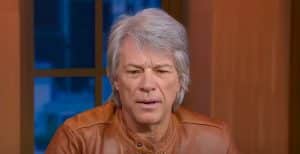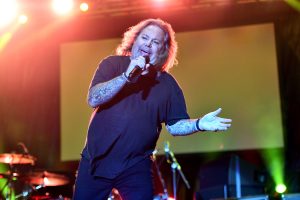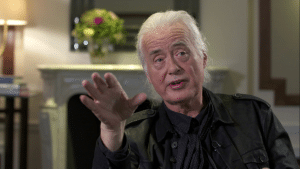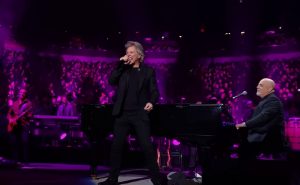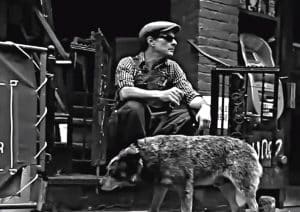10 Iconic Songs That Are Turning 75 Years Old This Year
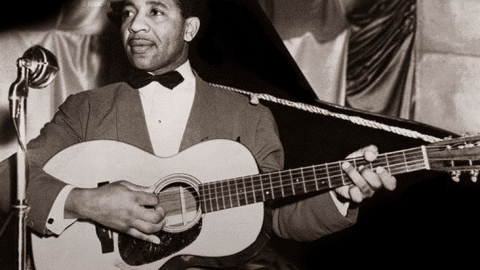
via Lonnie Johnson - Topic / Youtube
Seventy-five years. That’s quite a long time. These days, not many can get past that number. Music, on the other hand, is as timeless as the first ever tunes humanity ever heard centuries ago.
As the years roll by and the sands of time continue to shift, we find ourselves celebrating the enduring classics that have withstood the test of time. Music, in particular, has the remarkable ability to transport us back to different eras, evoking emotions, memories, and nostalgia like no other art form can.
In an era when the world was still reeling from the aftermath of World War II and experiencing the winds of change, these songs emerged as the soundtrack to a bygone era. These cultural artifacts are windows into the past, and timeless companions that continue to unite us through their melodies and lyrics.
So, let’s take a step back in time and celebrate the ten iconic songs that are turning 75 years old this year.
1. “I’m Looking Over A Four Leaf Clover” by Art Mooney
“I’m Looking Over a Four Leaf Clover” hails from the year 1927, with lyrics written by Mort Dixon and music composed by Harry M. Woods. In that same year, it found its initial success with recordings by Nick Lucas, Ben Bernie, and Jean Goldkette.
The song experienced a revival in 1948, when it was covered by a multitude of artists with Art Mooney’s version reigning atop the charts for three weeks. Other renditions that made the charts that same year were of Russ Morgan (No. 6), Alvino Rey (No. 6), The Three Suns (No. 10), The Uptown String Band (No. 11), and Arthur Godfrey (No. 14).
In contemporary times, this song has forged connections with Merrie Melodies cartoons, frequently featured in them, and has become a familiar tune performed by string bands during Philadelphia’s Mummers Parade.
2. “You Can’t Be True Dear” by Ken Griffin
Originally composed in German as “Du Kannst Nicht Treu Sein” by Hans Otten and Gerhard Ebeler, the song underwent a transformation into English, including its title, thanks to the efforts of Hal Cotten.
In 1948, Ken Griffin recorded the song, initially releasing it as an instrumental track and subsequently adding vocals by Jerry Wayne. Both renditions gained popularity through releases by the independent label Rondo Records. During the same year, several other artists recorded their own versions of the song.
Rondo Records released Griffin and Wayne’s recording as catalog number 228, which made its debut on the Billboard magazine Best Seller chart on April 2, 1948, ultimately claiming the No. 1 spot for seven consecutive weeks. Simultaneously, Ken Griffin’s instrumental recording, cataloged as number 128, joined the Billboard Best Seller chart on July 2, 1948, peaking at No. 2.
3. “Beg Your Pardon” by Francis Craig
“Beg Your Pardon” is a composition co-authored by Francis Craig and Beasley Smith, with its publication dating back to 1947 under the Robbins Music Corporation’s banner. Craig was a notable songwriter, honky tonk piano player, and leader of a Nashville dance band.
In the same year, Frankie Carle and His Orchestra recorded the song for Columbia Records. Additionally, the song’s original creator, Francis Craig, recorded another version.
Craig’s rendition nearly reached the top of the U.S. Billboard charts, holding steady at No. 3 for an impressive twenty weeks in 1948, followed by an enduring presence at the No. 4 spot for an additional sixteen weeks during the same year.
4. “On A Slow Boat To China” by Kay Kyser
Ever since it was published in 1948 by Frank Loesser, “On A Slow Boat to China” has become a pop standard that has been embraced by numerous artists over the years, with notable renditions including a duet featuring Rosemary Clooney and Bing Crosby, Ella Fitzgerald, Joni James, Frank Sinatra, Dean Martin, Jimmy Buffett, Fats Domino, and Liza Minnelli.
Popular bandleader and radio personality Kay Kyser himself covered the classic with his orchestra, with vocals by Harry Babbitt & Gloria Wood. Columbia Records released Kyser’s rendition on October 15, 1948, as catalog 38301.
Kyser’s version was also the most popular in 1948, peaking at No. 2 on the U.S. Billboard charts, with a run of 19 weeks on the charts. The following year, this version remained popular, especially in Australia where it reached No. 1.
5. “How High The Moon” by Ella Fitzgerald
“How High the Moon” is a beloved jazz standard, with lyrics written by Nancy Hamilton and music composed by Morgan Lewis. Its debut was in the 1940 Broadway revue titled Two for the Show, where it was beautifully rendered by Alfred Drake and Frances Comstock, providing a rare, poignant moment amidst the revue’s overall humor.
This song found its enduring legacy through the incomparable Ella Fitzgerald, becoming, alongside the Gershwins’ “Oh, Lady Be Good!”, her signature tune. Ella’s mesmerizing performance of “How High the Moon” took center stage at Carnegie Hall on September 29, 1947.
Her first recording of the song, backed by the Daydreamers, was recorded on December 20, 1947, and released by Decca Records under catalog number 24387, featuring “You Turned the Tables on Me” on the flip side. Perhaps her most celebrated rendition of “How High the Moon” graced her 1960 album Ella in Berlin, an achievement that secured its induction into the prestigious Grammy Hall of Fame in 2002.
6. “Chicken Shack Boogie” by Amos Milburn
“Chicken Shack Boogie” is a lively jump-boogie track from 1948, delivered by the West Coast blues maestro Amos Milburn. Remarkably, it marked the first of four instances where Milburn claimed the coveted number-one spot on the R&B Chart.
The song also appeared as the B-side of a 78-RPM single, with the A-side, “It Took a Long, Long Time,” securing a respectable ninth position on the same chart.
Milburn released “Chicken Shack” in 1956, this time offering a swifter, rock-and-roll rendition. This updated version, approximately 2 minutes and 30 seconds in length, would later be included in his 1957 album Let’s Have a Party. It’s worth noting that on subsequent compilation albums, this 1956 version is sometimes referred to as “Chicken Shack Boogie.”
7. “Tomorrow Night” by Lonnie Johnson
“Tomorrow Night” was a song written in 1939 by Sam Coslow and Will Grosz; it found its initial popularity with a rendition by Horace Heidt and His Musical Knights, featuring vocals by The Heidtlites, in the same year.
In 1948, Lonnie Johnson breathed new life into the song when he released it on King Records, having previously recorded it for Paradise Records in 1947. Johnson’s rendition featured his masterful guitar skills and Simeon Hatch on piano. This version soared to number one on the R&B charts for an impressive seven non-consecutive weeks and peaking at number nineteen on the pop chart.
Lonnie Johnson’s rendition of “Tomorrow Night” not only became his signature tune but also elevated the song to the status of a blues standard.
8. “I Can’t Be Satisfied” by Muddy Waters
https://www.youtube.com/watch?v=vTgwDknZlkA
Blues icon Muddy Waters wrote and released this song as a single in 1948, marking an early milestone in his career. “I Can’t Be Satisfied” was the B-side to “(I Feel Like)Going Home”, released as catalog 1305 by Aristocrat Records, peaking at No. 11 in the R&B Charts.
The song’s narrative revolves around a man informing his partner of his departure from town, driven by concerns for both her well-being and his own. He grapples with a troubled mind and an insatiable sense of restlessness.
Interestingly, this song shares thematic elements with another Muddy Waters track that played a pivotal role in shaping the band The Rolling Stones’ identity, the 1950 blues classic “Rollin’ Stone”. The English rockstars covered “I Can’t Be Satisfied” for their second album in 1965, The Rolling Stones No. 2.
9. “I Saw The Light” by Hank Williams
“I Saw the Light” is a country gospel composition crafted by country and Western icon Hank Williams. The inspiration for this song struck Williams during his journey back from a concert, specifically when he and his mother were arriving in Montgomery, Alabama.
This gospel standard was written in January 1947, when Williams was returning from a show in Fort Deposit, Alabama. During the journey, his mother, Lilly, spotted the lights of Dannelly Field Airport as they neared Montgomery. Awakened from slumber in the backseat of the car, Williams heard his mother exclaim, “I just saw the light”, telling him they were close to Montgomery.
This memorable moment led to its recording during Williams’ first session with MGM Records, with “I Saw The Light” being released in September 1948. Interestingly, Williams’ rendition didn’t achieve significant success upon its initial release, but it eventually evolved into one of his most beloved songs and a poignant closing number for his live performances.
10. “Nature Boy” by Nat King Cole
“Nature Boy” made its debut as a recording by the renowned American jazz vocalist Nat King Cole, hitting the airwaves on March 29, 1948, as a single under Capitol Records. This iconic track also found its place in the album The Nat King Cole Story.
The song, penned by eden ahbez, serves as a heartfelt tribute to Bill Pester, an adherent of the Naturmensch and Lebensreform philosophies, which ahbez himself followed. The lyrical themes of “Nature Boy” are intimately connected to a 1940s Los Angeles subculture known as the “Nature Boys”, a precursor to the hippie movement, with ahbez counted among its members.
Notably, “Nature Boy” was released during the American Federation of Musicians (AFM) ban of 1948, yet it defied the odds by ascending to the top of the Billboard music charts and selling over a million copies. This success catapulted Nat King Cole into the spotlight, making him a prominent figure in the white music market. In recognition of its enduring impact, “Nature Boy” received the Grammy Hall of Fame Award in 1999.




